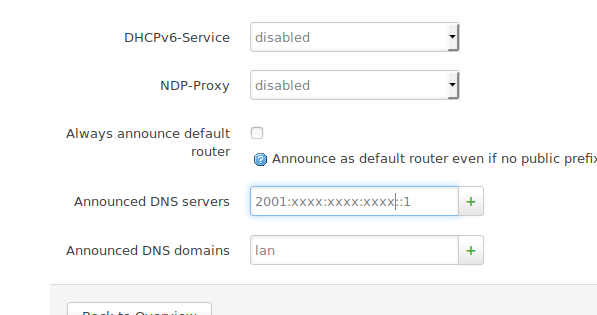Glorious IPv6. If only.
My ISP changes my prefix upon reconnection. Which causes me trouble in two areas:
(1) DNS for my LAN hosts
(2) stateful firewall config for incoming connections, in the absence of NAT66.
(1) can be tackled by configuring all clients to use DHCPv6 w/ very short lease times. Like 5 minutes or so. It's not perfect but maybe tolerable. In the meantime their global addresses are stale though, as are the corresponding DNS entries.
(2) is also somewhat problematic. I'd have to make the current prefix part of my firewall configuration and reconfigure on each prefix change. Assumed I wanted to open up ports really only for the hosts that are meant to receive traffic.
Both approaches are not optimal, so I've been looking for alternatives. NPTv6 seems to be a nice one, like it's used in multihomed setups, with pure ULA addressing on LAN and prefix translation on the router. OpenWrt doesn't seem to be quite ready for this though. Maybe also b/c the netfilter DNPT/SNPT targets don't work w/ connection tracking. So there goes the stateful firewall if I were to use those.
Maybe some of you guys found an elegant way out of this dynamic prefix mess? I mean, I'm really beginning to throughly appreciate my old, trusty, reliable and easily configurable IPv4 NAT.
Thanks, R.

